The Groovy Junghans 1972 Competition Chronographs in Steel and Gold
Perfectly calibrated 1970s vibes recreate a vintage chronograph celebrating Junghans’ official role as timekeeper in the Summer Olympic Games of Munich 1972.
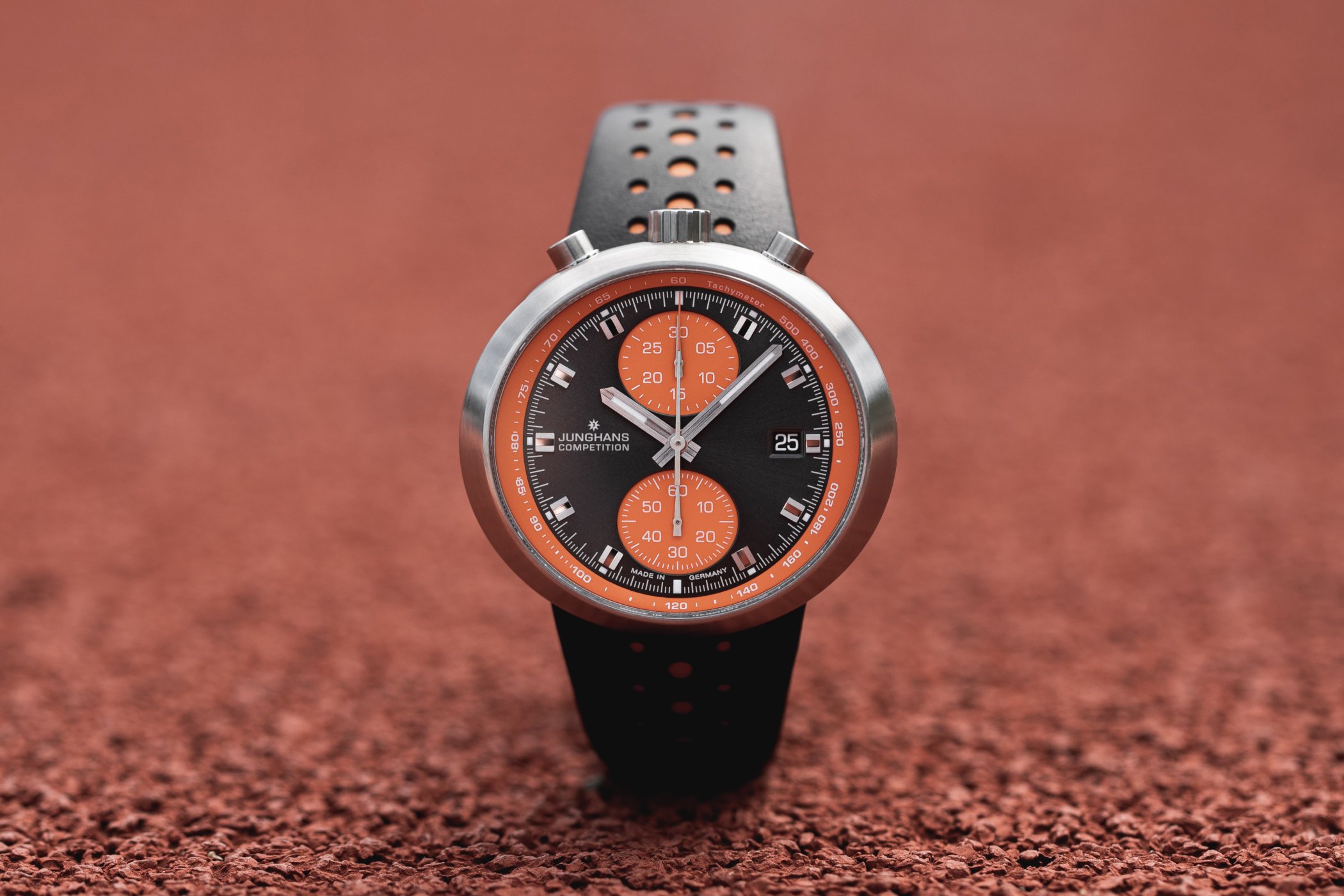
It’s not a well-known piece of trivia, but the German brand Junghans was one of the official timekeepers for the Summer Olympic Games held in Munich in 1972 (the other was Longines). Although we associate the brand from the Black Forest with minimalist Bauhaus-driven designs, Junghans also played an important role in the Munich Olympics, providing timekeeping instruments for disciplines like the 100m, archery and rowing. Junghans even developed an electronic start control, a Multi Counter device to track boats individually and produced the world’s first colour finish line photos accurate to one-hundredth of a second. To mark the brand’s involvement in the Olympic Games, Junghans also produced a series of civilian watches, including a chronograph known as the Olympic Bullhead (ref. 688.10) with a groovy 1970s case powered by a manual-winding Valjoux 7734. What goes around comes around, and the 1972 model is back to celebrate its 50th birthday in two limited editions: one in stainless steel that is practically identical to the original model and limited to 1,972 pieces, and a luxurious version in white gold with a different configuration limited to 50 pieces.
1970s Nostalgia
With their chunky elliptical-shaped cases and groovy orange and grey colour scheme, the look of these two chronographs is unmistakeably 1970s. Known as bullheads because of the position of the crown and pushers at the top end of the case that looks like bull’s horns, the chronographs emulate the shape of a hand-held stopwatch. They even have a slightly slanted case, decreasing in thickness from top to bottom, like the traditional table clocks used by timekeepers in sporting events. The slanted case is also practical, allowing you to manipulate the pushers and crown at the thicker and wider end and view the time at a favourable tilted angle. The proportions are not far off the mark from their 1972 ancestor, measuring 45.5mm from 9 to 3 o’clock, 41mm from 12 to 6 o’clock, with a case thickness of 14.5mm.
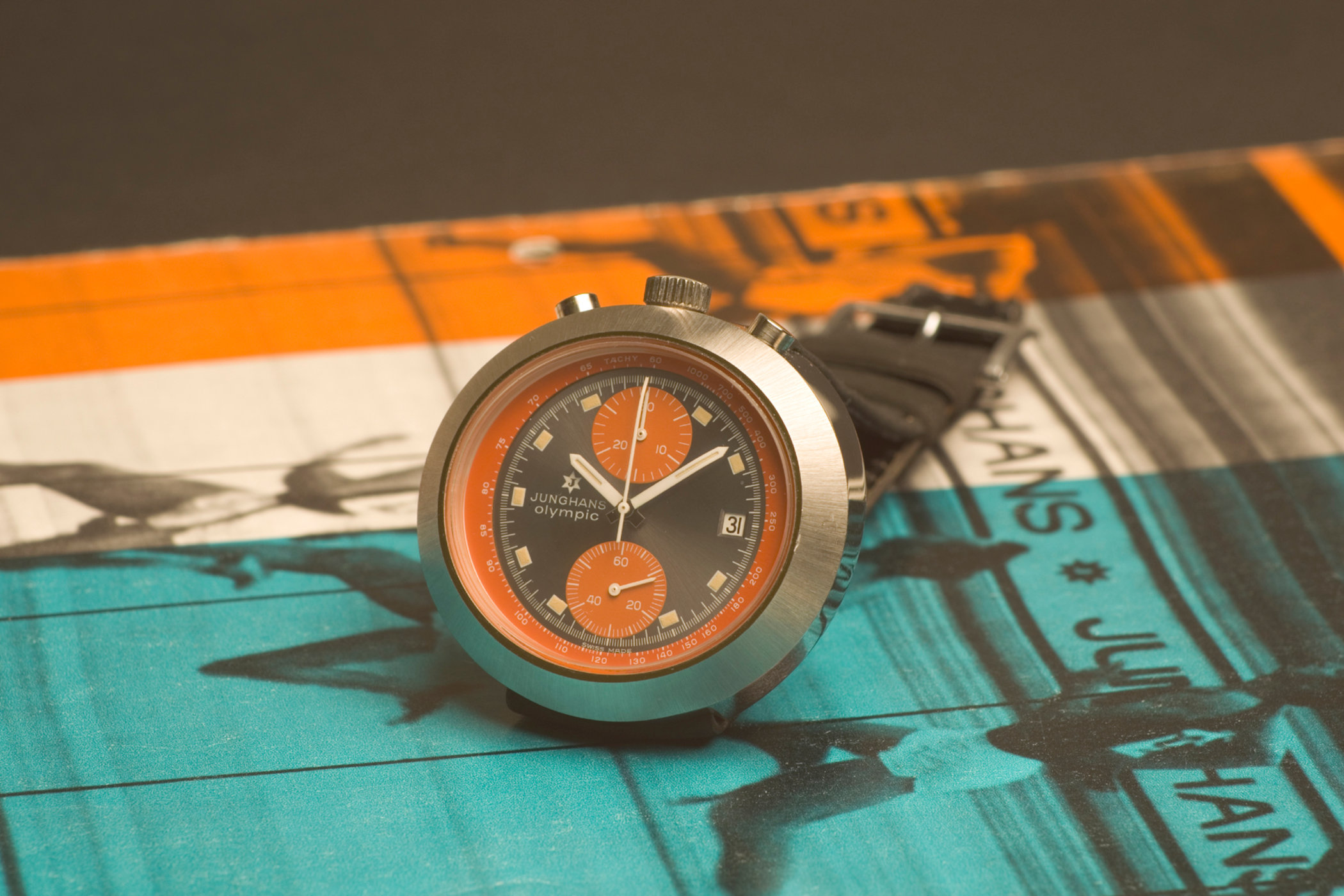
As we mentioned, the 1972 Competition is available in stainless steel or white gold cases, both brushed for an extra dose of sportiness and at a substantial price difference. Although the case size and colour scheme of both models are identical, the layout of the chronograph functions on the stainless steel model is faithful to the original. Arranged vertically, the orange 30-minutes counter is at noon, and the small seconds are at 6 o’clock, set against a grey sun-brushed dial. Instead of being round, the counters are also elliptical, and the peripheral orange tachymeter scale thickens and widens to respect the case’s contours.
Similar to the original, the short blocky indices are applied and, like the hands, are now treated with an environmentally friendly type of white luminescence. A white minute/seconds track and a central chronograph hand with an orange tip provide 1/5th of a-second readings, and the date window at 3 o’clock has a dark background to blend in with the anthracite dial. Beady-eyed readers will also note that the original Swiss Made inscription between the minute track and the tachymeter scale has been replaced with Made in Germany, and the Junghans star has been slightly rejuvenated.
The 18k white gold model, known officially as the 1972 Competition Edition (above, right), offers a more complex chronograph complication than the steel model, with an additional 12-hour counter to complement the 30-minute elapsed times totaliser. Using a tri-compax display, the 30-minute counter is at 9 o’clock, the 12-hour counter at 3 o’clock and small seconds at 6 o’clock. Another difference is the location of the date window, which is lodged between the indices at 4 and 5 o’clock.
The winning 1970s design is combined with modern features like the sapphire crystal with anti-reflective coating on both sides over the dial and the 100m water resistance. Accompanied by rally-style perforated leather straps with an orange lining, the straps appear to be integrated into the case thanks to the ergonomically curved rectangular caseback that bolts the strap in place.
Automatic Movement
Although they are hidden by the curved rectangular plaque on the caseback, both watches are powered by automatic calibres. The 1972 Competition Edition in white gold comes with the Junghans J880.1, which is a Sellita SW500. This automatic chronograph runs at a rate of 28,800vph and provides 48 hours of autonomy when fully wound. It displays central hours and minutes, with small seconds and chronograph hours and minutes in a tricompax layout. The final indication is the date. The 1972 Competition, in steel, uses the J880.5, which is a Sellita SW510. Junghans dropped the chronograph hours for this one, as it features a small seconds and 30-minute counter in a vertical bicompax layout. This one too comes with a date. The frequency and power reserve is comparable to the SW500.
Availability & Price
The 1972 Competition model in stainless steel is a limited edition of 1,972 pieces and retails for EUR 2,390 (incl. tax). The 1972 Competition Edition in white gold is limited to 50 pieces and retails for EUR 16,972 (incl. tax).
For more information, please consult the official Junghans website.

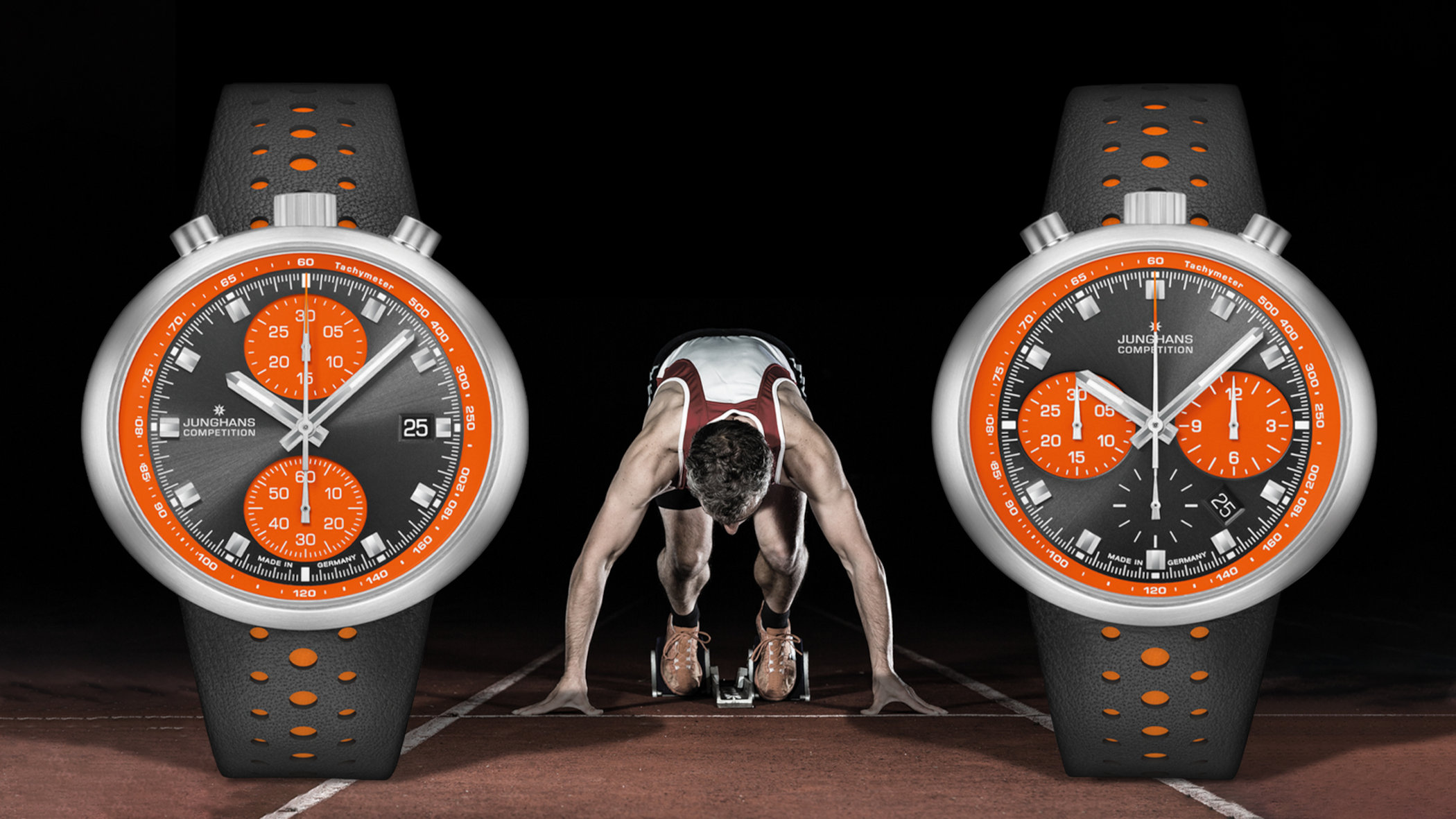
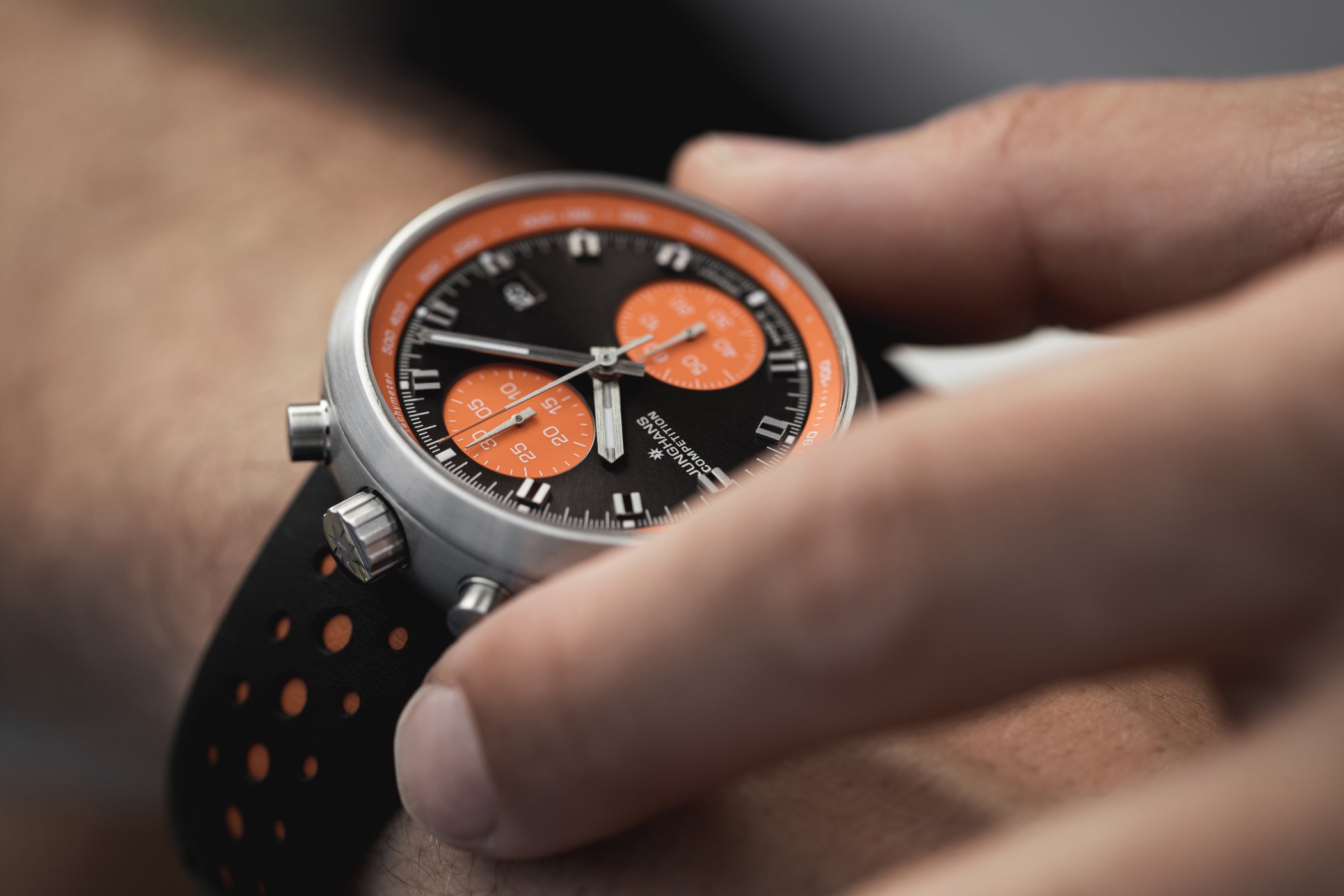
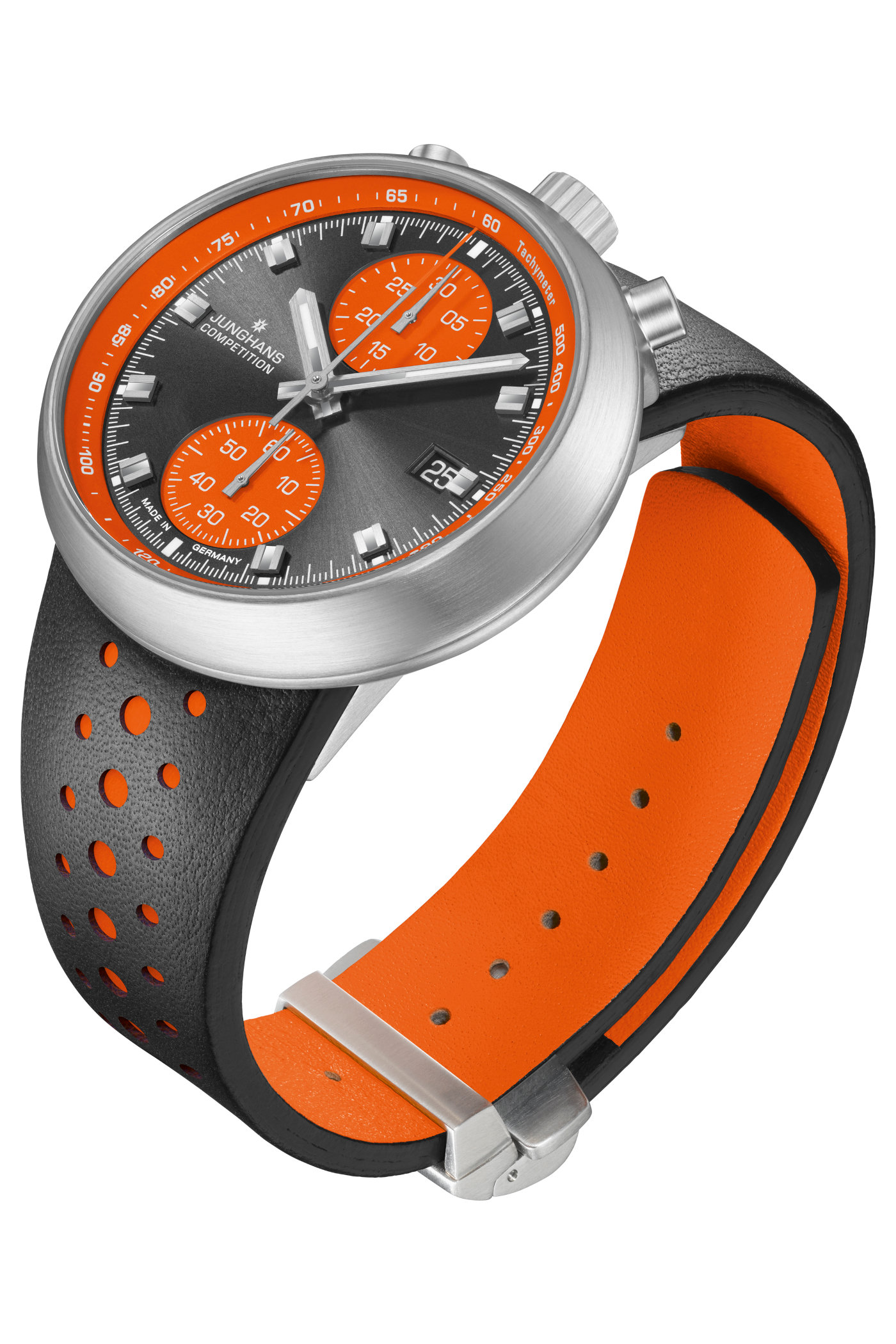


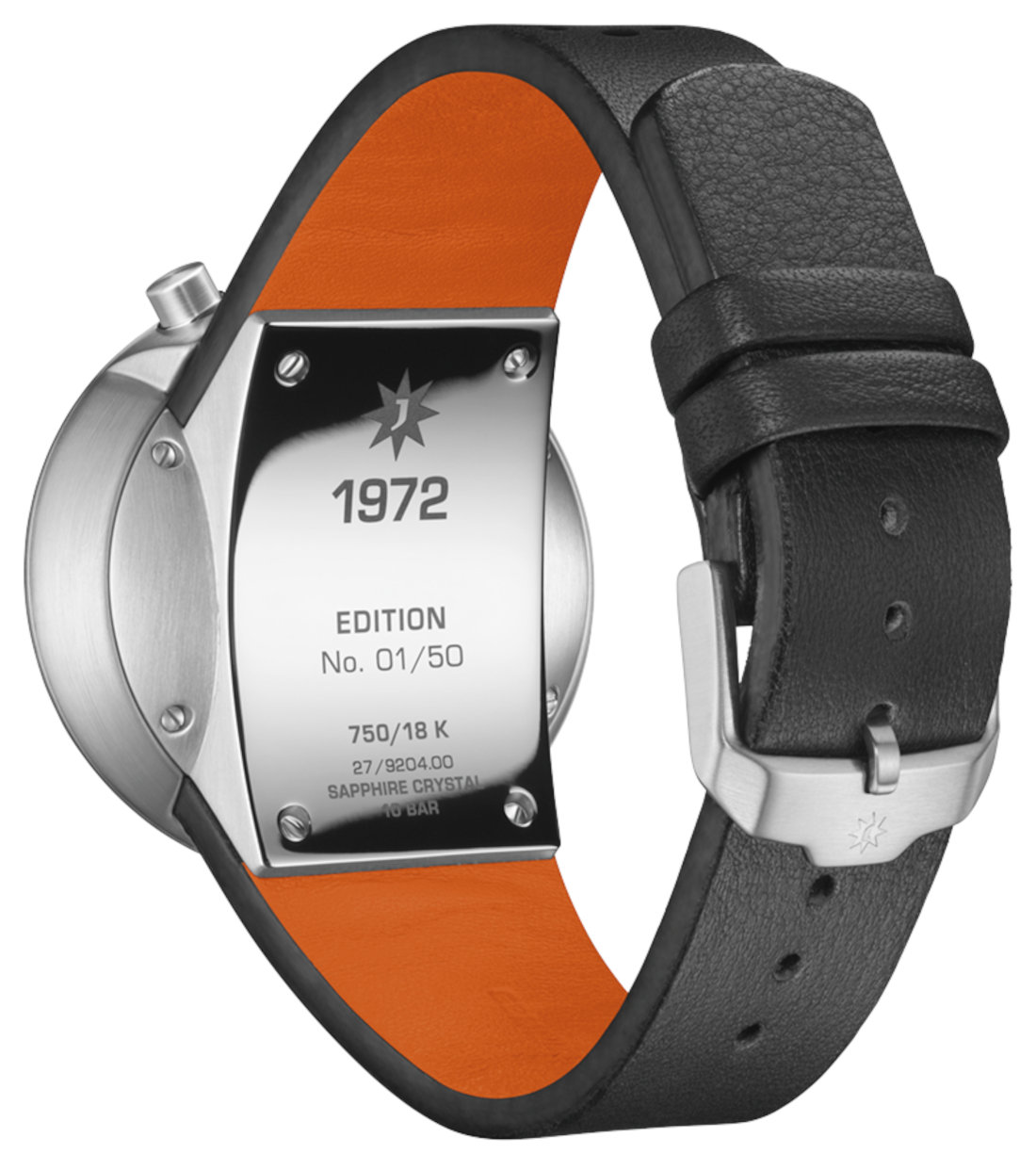
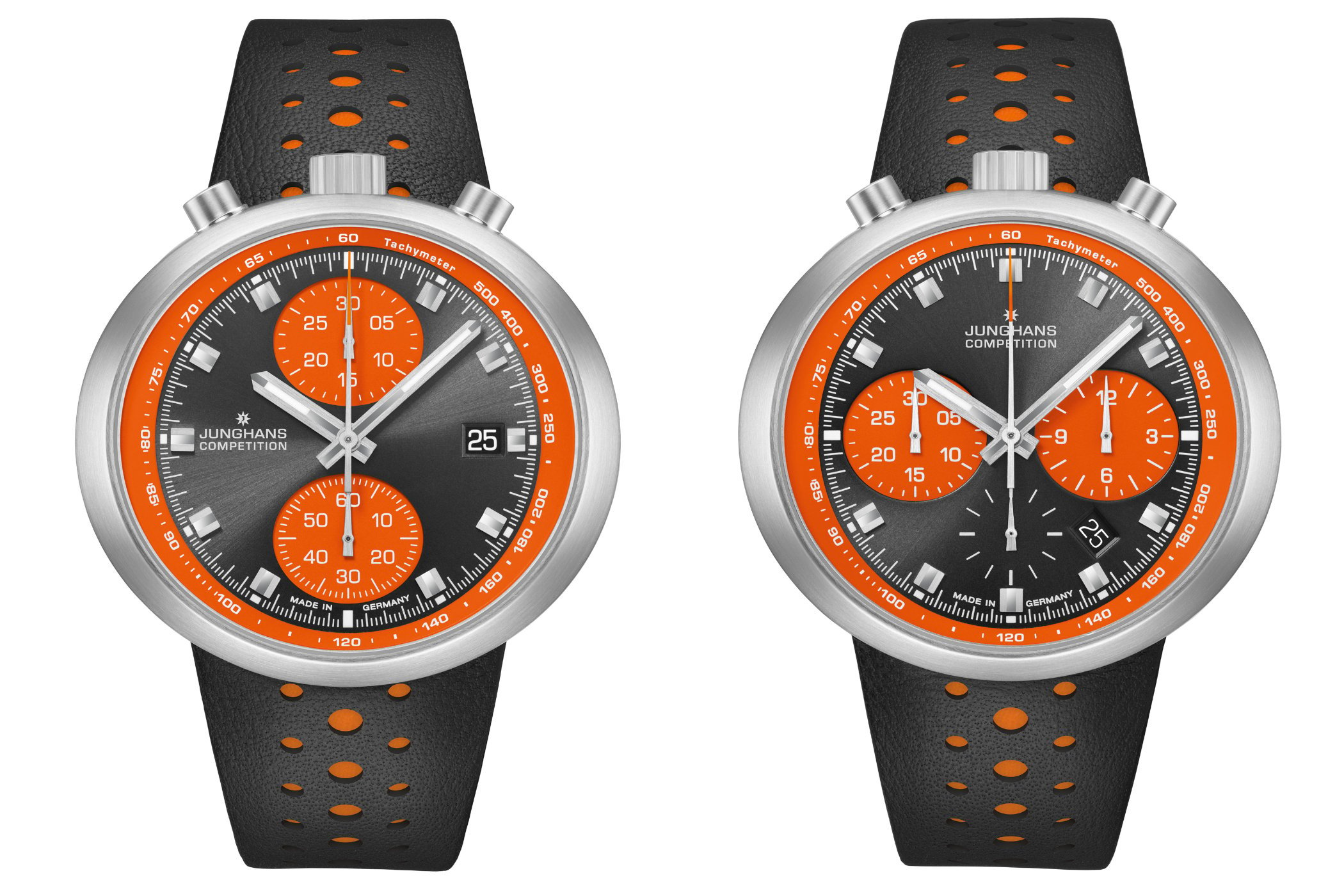



3 responses
Who the hell wants to commemorate Munich 72!?
Coming next month is a ceramic cased “Black September Edition”
Achtung Tragedy 😪